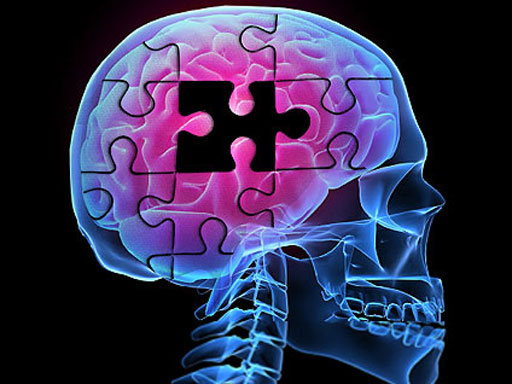A growing body of research suggests that the most common cause of dementia in older people is a mix of vascular and Alzheimer’s-related brain abnormalities, and that approximately half of people who die with Alzheimer’s also have evidence of strokes in their brains. Furthermore, when strokes and hallmark Alzheimer’s plaques and tangles are combined, it increases a person’s likelihood of experiencing dementia. Stroke, or as it is known more generally as cerebrovascular disease, occurs with aging and is made worse by conditions like smoking, hypertension or diabetes.
Recommendations by a group of scientists to bolster research on how Alzheimer’s and vascular conditions progress together and influence each other are available online, in advance of publication, by Alzheimer’s & Dementia: The Journal of the Alzheimer’s Association. The authors hope this research agenda, if executed, will uncover new clues for effectively treating or preventing dementia.
“We are encouraged by the potential for new treatment strategies for dementia to arise from studying the crossover of vascular factors with the progression of Alzheimer’s,” says Heather M. Snyder, Ph.D., director of medical and scientific operations for the Alzheimer’s Association, and first author of the new article. “In terms of next steps, we need to develop the research tools and collaborations necessary to further scientific investigation in this promising area of study.”
Cerebrovascular disease can be prevented with a variety of drug and lifestyle interventions; however, this has not yet been established for dementia. Snyder says, “Whether improved control of vascular risk factors can be translated to decreased dementia risk is not known, but results from a number of studies suggest that it is possible, and this untapped potential definitely deserves greater research attention.”
In December 2013, the Alzheimer’s Association, with scientific input from the National Institutes of Health’s National Institute of Neurological Disorders and Stroke (NINDS) and National Heart, Lung and Blood Institute (NHLBI), convened a group of scientific experts to discuss the scientific findings to date and gaps in research on vascular contributions in Alzheimer’s and related forms of dementia. The newly-published article summarizes the meeting and discussions, including an outline of next steps.
“Blood vessels that deliver nutrients to the brain and carry away waste are vital for normal cognitive function,” says co-author Roderick Corriveau, Ph.D., the NINDS program director who oversees dementia research. “Understanding vascular contributions to cognitive impairment and dementia, including changes due to stroke, heart disease and diabetes, are critically important to guide the development of preventions and treatments for dementia.”
“Inadequate blood flow can damage and eventually kill cells anywhere in the body,” says Donna M. Wilcock, Ph.D., a neurovascular researcher who is an assistant professor in the Department of Physiology at the University of Kentucky College of Medicine in Lexington and a co-author of the paper. “Since the brain has one of the body’s richest networks of blood vessels, it is especially vulnerable. Considering this and demonstrated success in reducing risk for heart disease, stroke and other vascular-related diseases through healthy lifestyle modifications and use of medications, it only makes sense to increase our understanding of the role vascular factors play in Alzheimer’s and dementia.”
The authors of the article recommend filling gaps in several key areas of research, including:
- The relationship between diabetes and insulin resistance and risk of vascular disease, Alzheimer’s and related dementia.
- Genetic factors that may influence vascular processes and other changes in the brain.
- Impact of immune system response on blood flow in the brain in the progression of Alzheimer’s disease.
- The role of fat breakdown in the brain in the removal of amyloid build-up that leads to the hallmark brain plaques in Alzheimer’s disease.
- Controlling the impact of vascular risk factors on memory and thinking abilities.
The authors also conclude that biological markers, which are used to detect and measure disease progression, of key vascular processes related to impairment of brain function, memory and thinking abilities are needed to move this research further and faster.
“Having the methods to detect early signs of vascular-related brain injury or disease with the greatest impact on Alzheimer’s and dementia would greatly enhance our efforts to develop effective therapies,” says David Knopman, M.D., professor of neurology at the Mayo Clinic College of Medicine in Rochester, MN, and a co-author of the paper. “Especially needed are tools that are highly accurate and do not require invasive procedures to collect and measure.” Dr. Knopman is vice chair of the Alzheimer’s Association Medical and Scientific Advisory Council.
Among the biological markers the authors say are necessary are:
- Ability to detect amyloid in blood vessels in the brain.
- Imaging technology that can detect changes from dying brain tissue.
- Indicators of risk for Alzheimer’s in pre-diabetic individuals.
- Improved methods for measuring the impact of blood flow in the brain on memory and thinking abilities.
“Future investment for these areas of scientific discovery will be essential to galvanize the scientific community and provide forums of communication between the dementia and vascular fields,” the authors state in the paper.
As a further next step, research sessions and scientific presentations focusing on the relationship between vascular factors, Alzheimer’s disease and related dementias are being planned for upcoming major scientific and medical conferences–including meetings hosted or sponsored by the Alzheimer’s Association, the American Heart Association, and the National Institutes of Health.







